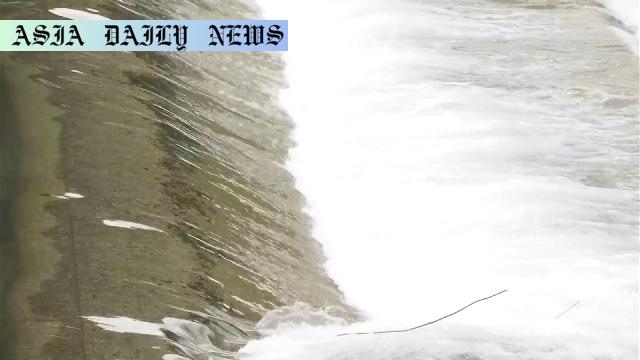Drownings: Japan sees highest number of drownings in a decade, with heat and unsafe play near rivers as key contributing factors.
Record-high 1,535 drownings occurred in Japan last year.
Rivers saw a surge in incidents, surpassing prior five-year averages.
Children playing unattended near rivers were key victims.
Police emphasize preventive measures for upcoming summer months.

Record-High Drownings in Japan
In an alarming revelation, Japan witnessed its highest number of drowning cases in a decade, with a total of 1,535 reported incidents last year. This marks a stark increase of over 140 cases compared to the prior year. The National Police Agency has identified several factors contributing to this surge, including extreme summer heat and unsupervised recreational activities near water bodies such as rivers and irrigation channels.
Insights into the Statistics
Breaking down the figures further, 794 individuals tragically lost their lives to drowning, and 22 remain missing. Among the cases reported, the sea accounted for 372 incidents, followed by 288 in rivers, 100 in irrigation waterways, and smaller numbers in ponds, lakes, and swimming pools. While coastal and open-water drowning incidents remain a persistent risk, the rising number of drownings in inland rivers marks a concerning trend. Children, particularly those of junior high school age or younger, constituted a vulnerable group, with many losing their lives while playing in local rivers unsupervised.
Contributing Factors and Patterns
The persistence of higher-than-average temperatures during the period from September through November has been cited as a key driver. This prolonged intense heat likely encouraged more people to seek relief near water, contributing to heightened risks. Coupled with the attraction of quick currents and slippery terrain, rivers became particularly hazardous for both children and adults.
Preventive Measures Urgently Required
In response to the rising fatalities, the police have issued guidelines urging the public to adopt stricter safety measures, especially during the upcoming summer. Authorities are recommending vigilance around slippery areas, awareness of currents, and, most importantly, ensuring that children are not left to play unsupervised near water bodies. Record-high temperatures and evolving recreational patterns underline the critical importance of proactive measures to mitigate risks and save lives.
Moving Forward with Awareness
As Japan prepares for another summer season, the recent statistics act as a sobering reminder of the inherent risks of unsupervised play and unsafe practices near water. With a collective effort by families, communities, and local authorities, it is hoped that such tragedies can be significantly reduced in the future. Public awareness campaigns, the implementation of stronger safety protocols, and community-driven vigilance play pivotal roles in ensuring that the haunting figures of the past year are not repeated.



Commentary
The Tragic Rise in Drownings Deserves Greater Attention
The tragic rise in drowning incidents across Japan last year reflects an urgent public safety concern requiring immediate attention. With a record-high figure of 1,535 cases logged, the statistics paint a harrowing picture of preventable deaths that expose crucial gaps in water safety measures. It is not merely a numerical increase—it is a call for collective action by authorities, families, and communities alike.
Understanding Contributing Sociocultural Factors
Beyond the harsh summer heat, which may have driven more people towards water for relief, societal trends and habits come into sharper focus. Rivers and other natural water bodies are inherently attractive spots for recreation, yet many individuals, particularly children, lack a clear understanding of their dangers. The fact that young children were often playing unsupervised underscores the need for greater parental awareness and community-driven safety practices. Public messaging alone cannot suffice; systemic changes in how water safety is approached in schools and neighborhoods are urgently needed.
Leveraging Policy and Technological Tools to Save Lives
Proactive steps by law enforcement agencies, such as better signage and barriers along dangerous water bodies, could prove vital in reducing drownings. Community initiatives that organize supervised water activities or educational drives could further fortify defenses against these tragedies. The use of technology, including apps to report high-risk zones and systems to alert parents or guardians about unsafe aquatic conditions, might add an additional layer of prevention.
Final Thoughts: A Shared Responsibility
Ultimately, this issue transcends policy and requires a fundamental cultural shift in how water risks are perceived and addressed. With families becoming more aware, communities taking initiative, and governments plugging infrastructural gaps, lives can be saved. It is through such unified action that we can ensure the heartbreaking stories behind these statistics are not repeated, and Japan can move towards a safer future for all its residents.